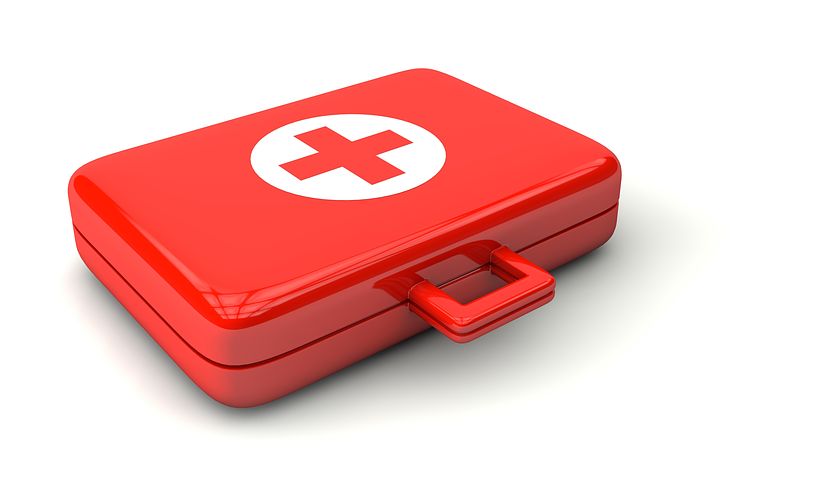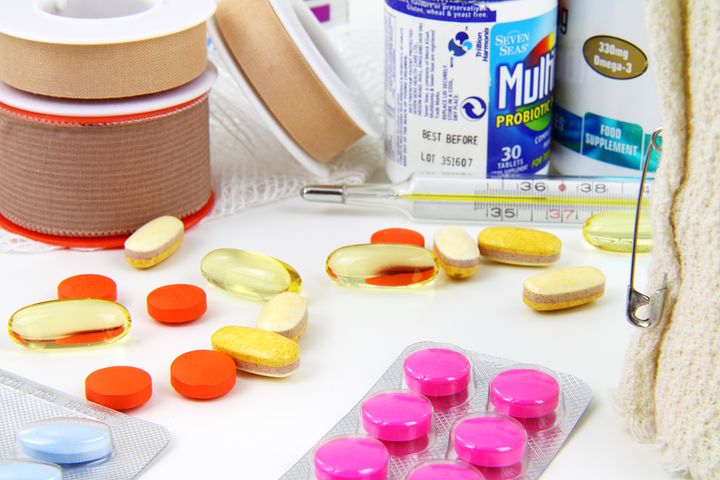 Everyone should have a home first aid kit ready to go in case an emergency should arise. If you have small children, being prepared with an up-to-date first aid kit becomes even more important. Keeping a first aid kit within easy reach will provide you with considerable peace of mind. Here’s a handy checklist of the items that your first aid kit should, at a minimum, contain:
Everyone should have a home first aid kit ready to go in case an emergency should arise. If you have small children, being prepared with an up-to-date first aid kit becomes even more important. Keeping a first aid kit within easy reach will provide you with considerable peace of mind. Here’s a handy checklist of the items that your first aid kit should, at a minimum, contain:

1. An Antiseptic (such as Bactine): Cleaning scrapes or wounds is important for preventing infection. If soap and water are not on hand, using an antiseptic will help flush out debris and provide a mild pain relief. Antiseptics may come in cream or spray form. Many, such as bactine, also provide pain relief.
2. Bandaids and gauze pads. Bandaids help treat injuries of all sizes. Your best bet is to buy a large package that comes with a variety of sizes.
For gauze pads, buying larger sizes works best, because you can always cut them down to the size you need. Gauze pads work well for more serious injuries.
3. Scissors. Speaking of cutting, scissors are often overlooked in many first aid kits. Scissors come in handy not just for cutting gauze pads, but for cutting clothing, adhesive tape, and anything other materials or obstructions that may present themselves in an emergency.
4. Ace Bandages. Ace bandages come in handy in a variety of situations, such as sprains and breakages.
5. Instant Cold and Hot Pack. These packs are for one-time use only, so it’s a good idea to stock up your first aid kit with them. They can be applied on sprains, bruises, and bumps to reduce swelling.
6. Adhesive Tape
Adhesive tape can be used to form splits, tape gauze, and secure any other bandages.
7. Tweezers. Like scissors, tweezers are often overlooked, but come often come in handy. They can be used to remove stingers, ingrown hairs, splinters, and hang nails.
8. Latex Gloves. Latex gloves are a helpful addition to any first aid kit. Latex gloves will provide a clean and sanitary way to protect you against bacteria, blood, bodily fluids, and other potential contaminants that you may encounter in an emergency situation.
9. Analgesic. An analgesic is a pain reliever. Include a small bottle of aspirin or ibuprofen to combat headaches, migraines, or pain due to injury.
10. Antibiotic Ointment. A small tube of antibiotic ointment can go a long way. Antibiotic ointment can be used on scrapes, cuts, wounds, and other injuries to prevent infection.
11. Rubbing alcohol and disinfectant. These are helpful for cleaning insect sting bites or for cleaning wounds. Alcohol wipes are particularly convenient to have in your first aid kit because they don’t take up much space.
12. Antihistamine. In the case that someone may suffer from severe allergies, having some sort of antihistamine on hand is a good idea.
13. A list of emergency phone numbers. Keep an index card with the numbers of your doctor, the national poison center, and all other emergency contacts. Also, it’s a good idea to write down the name of members of your family who have allergies, and any medication they take on a regular basis.

1 Comment
Paul Omotosho
August 6, 2018 at 2:01 pmThese are awesome collections one needs to have as an individual.
Thanks for updating us again!.